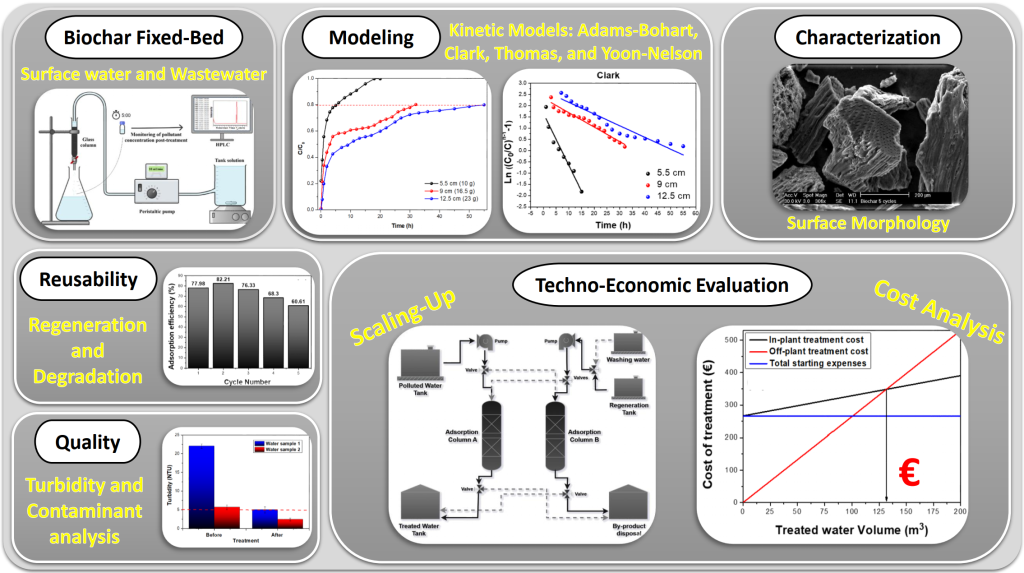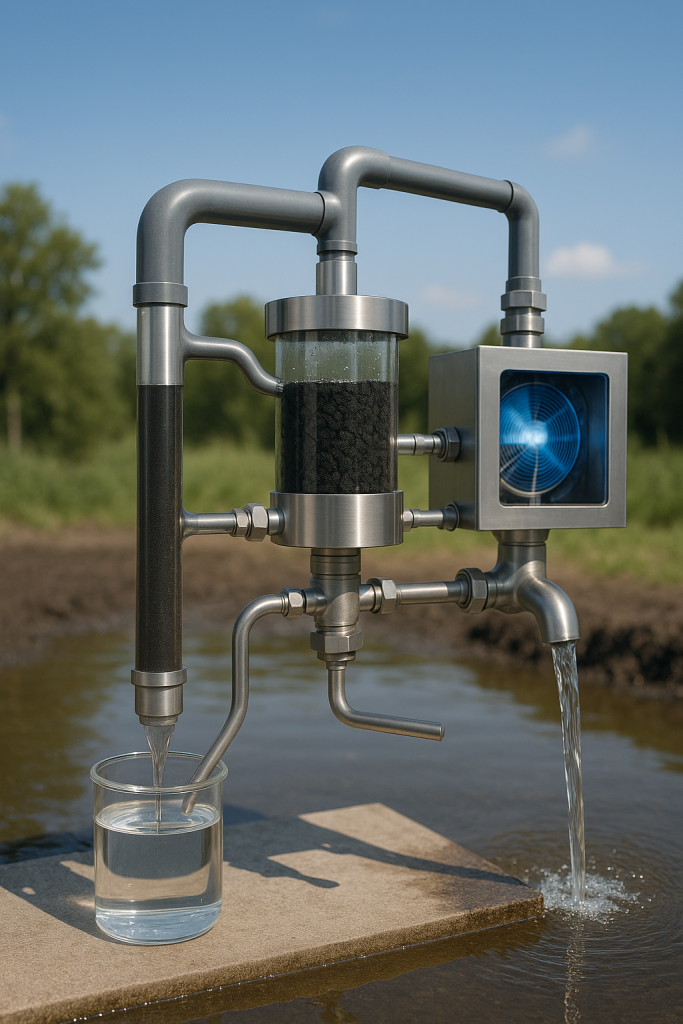
As part of the research developed under the PRIMA-SAFE project, a new peer-reviewed article has been published in the high-impact journal Separation and Purification Technology (Impact Factor: 9). The paper, titled:
“Biochar-based Downflow Fixed-Bed Adsorption Systems for Water Treatment: Process Optimization, Reusability, and Techno-Economic Evaluation”,
offers fresh insight into sustainable, low-cost technologies for addressing one of today’s most pressing environmental challenges: the treatment of contaminated water.
A Practical and Scalable Approach to Water Purification
The study focuses on the use of biochar, a porous, carbon-rich material derived from biomass, as a core component in down flow fixed-bed adsorption systems—a configuration widely considered suitable for both centralized and decentralized water treatment applications.
Through a combination of experimental optimization, real-water testing, and techno-economic evaluation, the research offers compelling evidence that biochar-based systems can provide an efficient, eco-friendly, and affordable solution for removing contaminants from water supplies. This makes them particularly well-suited for resource-limited or climate-stressed regions, such as those targeted by the PRIMA-SAFE initiative in the Mediterranean.
Key Highlights from the Study

- ✅ Process Optimization: The team identified optimal operational conditions for column design and flow rate to maximize removal efficiency of sulfamethoxazole, a common pharmaceutical pollutant found in surface waters and wastewater effluents. The study demonstrated that under optimized conditions, high removal rates could be achieved, even at elevated contaminant concentrations.
- 🔄 Reusability & Regeneration: A major strength of the system lies in its regeneration capability. The study showed that biochar columns could be reused through multiple adsorption-desorption cycles without significant loss of performance, reducing material consumption and waste generation over time.
- 💧 Real Water Testing: Beyond laboratory conditions, the system was successfully validated on real water samples, where it showed excellent results in reducing turbidity and removing trace pollutants. This proves the system’s relevance for practical field applications.
- 💰 Techno-Economic Assessment: A detailed evaluation of operational costs confirmed that the proposed setup offers a very low treatment cost per cubic meter, making it not only technically effective but also economically feasible for large-scale implementation.
Towards Circular, Low-Impact Water Solutions
The publication underlines PRIMA-SAFE’s commitment to developing technologies that balance scientific rigor, affordability, and environmental responsibility. In particular, this study contributes to the project’s broader goals of supporting circular economy models, where waste biomass is upcycled into functional materials—like biochar—that can close resource loops in water treatment.
It also reinforces the role of adsorption technologies as a competitive option alongside more established methods like membrane filtration or advanced oxidation, especially where energy consumption or cost presents a barrier.

Acknowledgements
This achievement would not have been possible without the collaboration of an interdisciplinary team of researchers and engineers working under the PRIMA-SAFE umbrella. Their collective expertise in environmental engineering, material science, and process optimisation continues to drive forward innovation in the field of water reuse and treatment.
🔗 Access the full publication here
📘 Journal: Separation and Purification Technology
Stay tuned as PRIMA-SAFE continues to deliver impactful results at the intersection of science, sustainability, and practical implementation.

